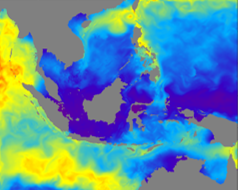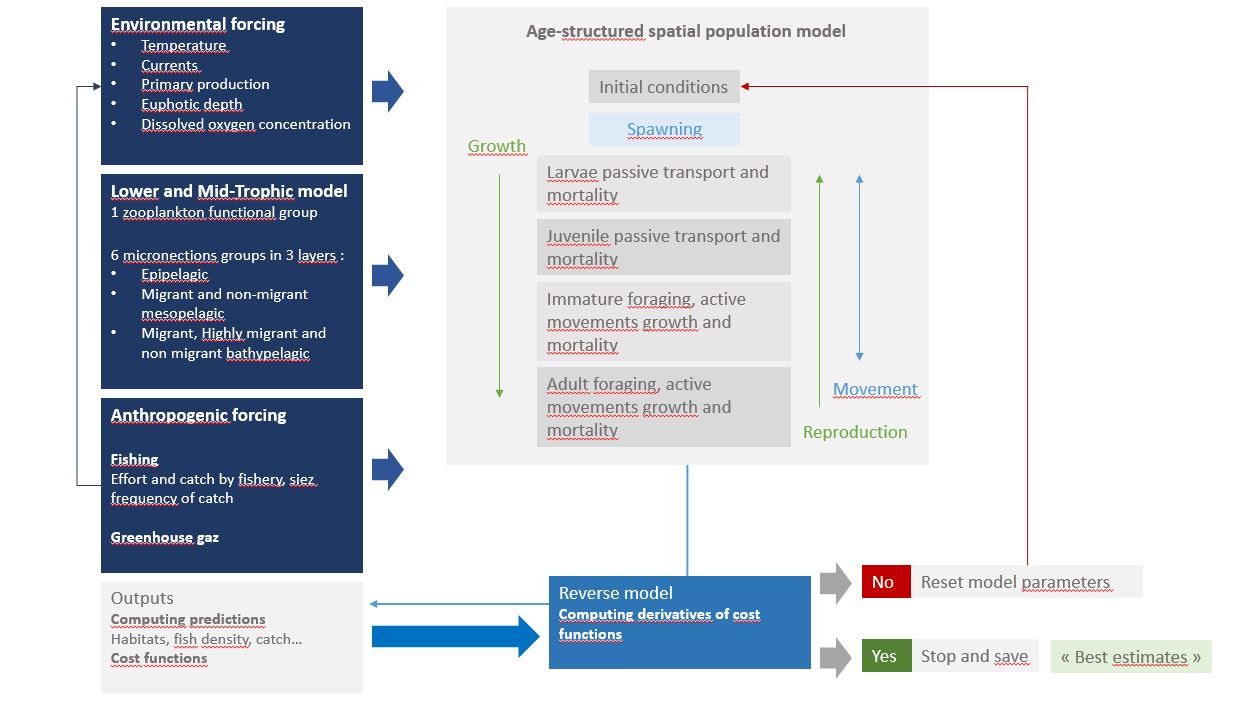Sustainability of marine resources
Today, marine resources are too often depleted due to overfishing and illegal, unreported, and unregulated fishing, climate change and pollution.This pressure, added to the effects of global warming, might lead to fish stocks collapses.
SEAPODYM has been initiated in the mid 1990s by the Oceanic Fisheries Programme of the Secretariat of the Pacific Community (SPC) and developed under several European development projects. The objective was to propose new management tools taking into account both the fishing impact and environmental variability.
Since 2006, in partnership with SPC, its development has continued with the Marine Ecosystem Modeling team of CLS (Collecte Localisation Satellite). CLS aims to combine this modeling approach with satellite observation and real time data collection to develop operational real time applications and advise government administrations on the sustainable management and monitoring of marine resources.
“There was strong support from the EB-SWG participants for the SEAPODYM modeling conducted by Lehodey and his collaborators. There was a lengthy discussion about the model and about how the results from SEAPODYM compared and contrasted with those of the MULTIFAN stock assessments. It was noted that the inclusion of environmental factors in SEAPODYM may provide further insights into the underlying stock-recruitment relationship of the key tuna stocks. […]
SEAPODYM should be included as an affiliated, independently funded, project in the SC’s work programme.”
“Greenpeace urged the Scientific Committee to fully use the spatial ecosystem and population dynamics model (SEAPODYM) model to forecast environmental effects due to climate change, and incorporate these into stock assessments.”
Model development
- Prediction of the temporal and spatial distributions of functional lower and mid-trophic level groups (Lehodey et al. 2010; 2015)
- Prediction of the temporal and spatial distributions of age-structured predator (fish) populations (Lehodey et al. 2008);
- Prediction of the total catch and the size-frequency of catch by fishing fleet;
- Parameter optimization based on data assimilation techniques (Senina et al., 2008);
The lower and mid-trophic level (LMTL) sub-model describes dynamics of a functional group of zooplankton and several vertically migrant and non-migrant micronekton (prey of larger fish) groups. The dynamics is linked to temperature and currents. Assimilation of acoustic or biomass data is used to estimate the model parameters.
Dynamics of fish populations are estimated using habitat indices, movements, growth and mortality.
The feeding habitat is based on the accessibility of fish to the groups of prey.
The spawning habitat combines temperature preference and coincidence of spawning with presence or absence of predators and food for larvae. Successful larval recruitment is linked to spawning stock biomass and mortality during the drift with currents.
Older fish can swim along the gradient of habitat index in addition to being advected by ocean currents.


